Zen and the science of motorcycle batteries
I’ve said it before, and I’ll say it again: Subtle modifications are the best ones. Unfortunately, one such combination of old and new nearly cost me my butt and my friend a low-mileage, original Kawasaki motorcycle.
It all started when he offered to give me the afternoon to exercise his vintage bikes. It’s an opportunity one doesn’t turn down, especially when the friend’s the kind of guy who scolds you for not riding his bike hard enough: “I can hear you all the way to curves on the highway, and you need to let this bike get on the pipe!” Don’t have to tell me twice.
Negotiation was simple. In return for the ride experience, I agreed to provide riding notes for a book he is working on and bring a few of his bikes back up to running order. A little carb work here, unsticking clutch plates there, and putting new batteries in just about everything. Since some bikes were waking from years of storage, that meant a couple pairs of tires to install. No big deal, and it’s why I keep tools in my van.

The last bike to get attention was a 1973 Kawasaki Z1. Since it had run most recently, among the fleet of eight or so, it needed the least work. The gas in the tank wasn’t even sour, but the battery had been pilfered for some other project, so I was directed to a small stack of new batteries in the corner of the shop. The owner is not a penny pincher and had broken out the checkbook for a bunch of very nice, very lightweight, lithium-ion batteries. Replacing lead-acid batteries with these updated, chemical-charge cells is a common strategy to shed weight. One like this in the Z1 can take as much at six pounds off a bike. That’s meaningful change. Oh, and these batteries are often more resilient during long-term storage. Win/win for a guy who owns a bunch of motorcycle in northern Michigan, snow-bound for months of the year.
I threaded the bolts for the positive and ground leads and tucked the little, red and black battery into the factory battery box before padding it with a couple chunks of styrofoam so it wouldn’t shift and arc the terminals while I was riding it. After I snapped the seat down, it only took a slight tickle of the starter for the 900cc inline-four to sputter to life. 15 or 20 seconds later, it had cleaned up and was thrumming a smooth idle. I let the bike warm up a bit as I put on my leather jacket, helmet, and a pair of gloves. As I swung a leg over the bike and picked up the kickstand, the owner popped over to point at the tachometer. “The bike only really comes alive over here,” he said, index finger circling 8,9, and 10 on the gauge.
Now I was conflicted. This was not my motorcycle, and it is both very original and quite low-mileage. Last thing anyone wants to do is blow up a bike they don’t own and can’t afford. Before I could even start my protest, my friend shut me down.
“Seriously, you have to wring it to make this bike work.”
Headed for the curves in the highway, I gave it the beans. I’ve ridden a handful of other inline-fours of this era and had made sure to read the early reviews of the Z1 before the ride, which meant my expectations were realistic. The chassis was as noodly as one would expect a bike of the era to be, yet it also was sharp, making me feel right at home turning in and apexing corners—as best I could, while staying in my lane.
A big, fast left opened up to a nice, half-mile straight run between two open fields. The tach was at 7000 right at the apex and, as I rolled on the power, the bike picked up and felt like a needle in the groove of a record.
The record scratched.
A slight loss of power, a cough through the carbs, then a puff of smoke and total engine shutdown. I had the clutch covered in less than a moment and smoothly braked into a convenient driveway to face what could only be bad news. No oil on the ground or new holes in the cases—in fact, no fluids spilled at all. Smoke was still tracing from under the seat in long whispers. Had the air filter caught fire? I didn’t know.
This was not when I wanted to learn how to open a Z1 seat latch. Where was the seat latch? That’s a concerning amount of smoke. I had installed the battery in the bike under the seat and closed it, but it was open when I started working on it, so now I didn’t know exactly where the latch was or if I needed the key to operate it.
Sheer panic.
When I finally got the seat flipped up, I was met with a cloud of fumes that probably took three years off my life. That brand-new battery was so hot it had melted off its stickers and was cooking the plastic case. Everything near it was hot. After an unsuccessful attempt to undo the battery connection with my pocket knife, I discovered this bike still had its original toolkit. Lucky me. The factory-packed slip-joint pliers made quick work of disconnecting the terminals, allowing me to reach in a gloved hand and yank out the battery so both it and I could cool for a minute.
I took a deep breath, for clean air reasons and clear head reasons.
After some mental regrouping, and after failing to get the bike’s owner on the phone, I took a chance. I’d try to bump-start the Z1 so I could get the three or so miles back to the garage. Not all electrical systems will function without a battery installed, but I was not about to put that overcooked chunk back in the bike. Luckily, the Z1 fired right off in second gear, idling happily while I put on my helmet and balanced the battery on my right leg. I wasn’t about to abandon a potential fire hazard in some stranger’s driveway.
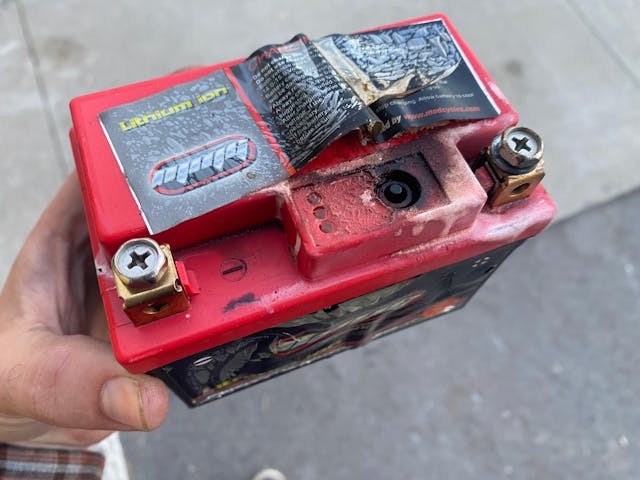
Back at my friend’s garage, the diagnostics began nearly instantly after I told my story: “Oh, that means the regulator failed. It’s a common issue on these.” It took me a second to understand the timeline of events that lead to that battery popping. Essentially, it looks like this:
The engine’s high-rpm run led to the charging system producing a little extra current. The regulator would typically dump this to ground, but the excess current came fast enough that the regulator either was overwhelmed or failed independently, in a way that it stopped bleeding that excess to ground and instead overcharged the battery. (This is where it gets a little nerdy, so fair warning.) Now the situation became a chemical problem rather than an electrical one. When a traditional, lead-acid battery receives extra current, it will boil off the acid and display sulfation, in which part of the acid is deposited on the plates of the battery, thus diminishing the battery’s ability to accept a charge. Lithium-ion batteries are much less forgiving. They simple cannot absorb overcharge that way. Once plating of the metallic lithium occurs, it compromises the safety of the battery. Thermal runaway is far more likely in a li-ion battery than in a lead-acid one.
Thermal runaway. Awful scary term for something that happened about two inches underneath my precious parts while traveling at highway speeds. Luckily, the Kawasaki is not damaged and its charging system can be easily repaired. More importantly, I am unscathed—and more wary than ever of mixing old and new technologies.


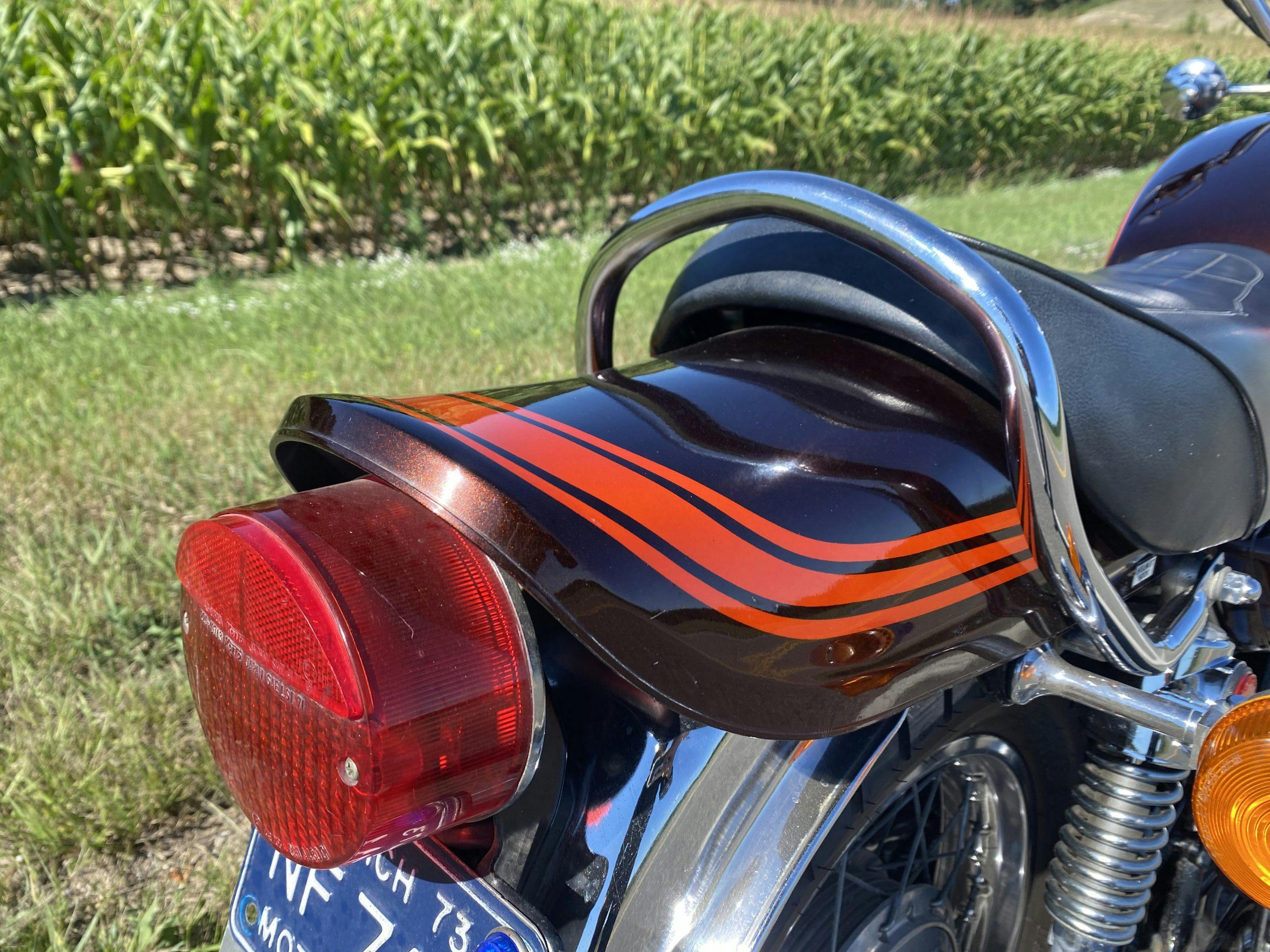
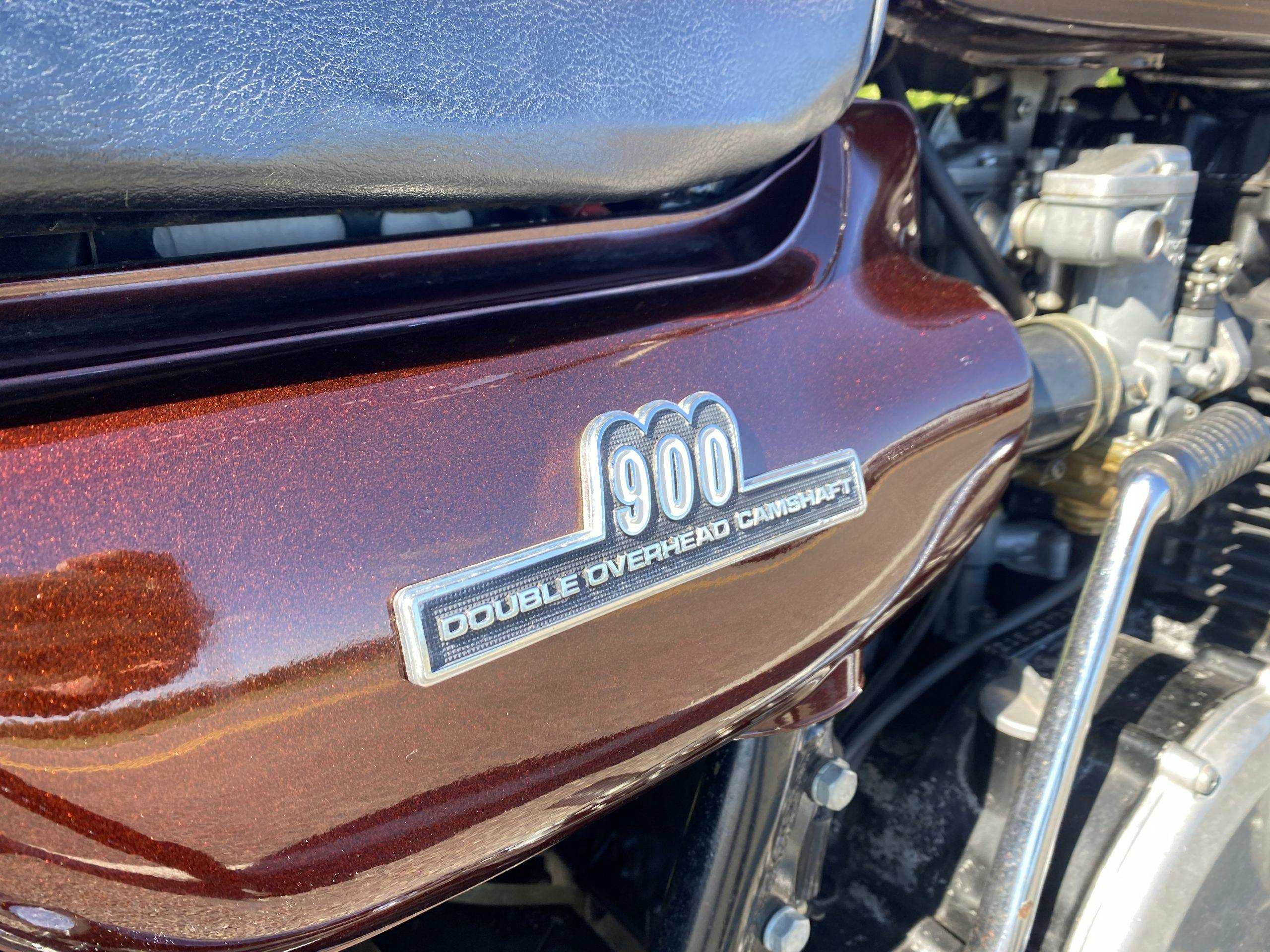



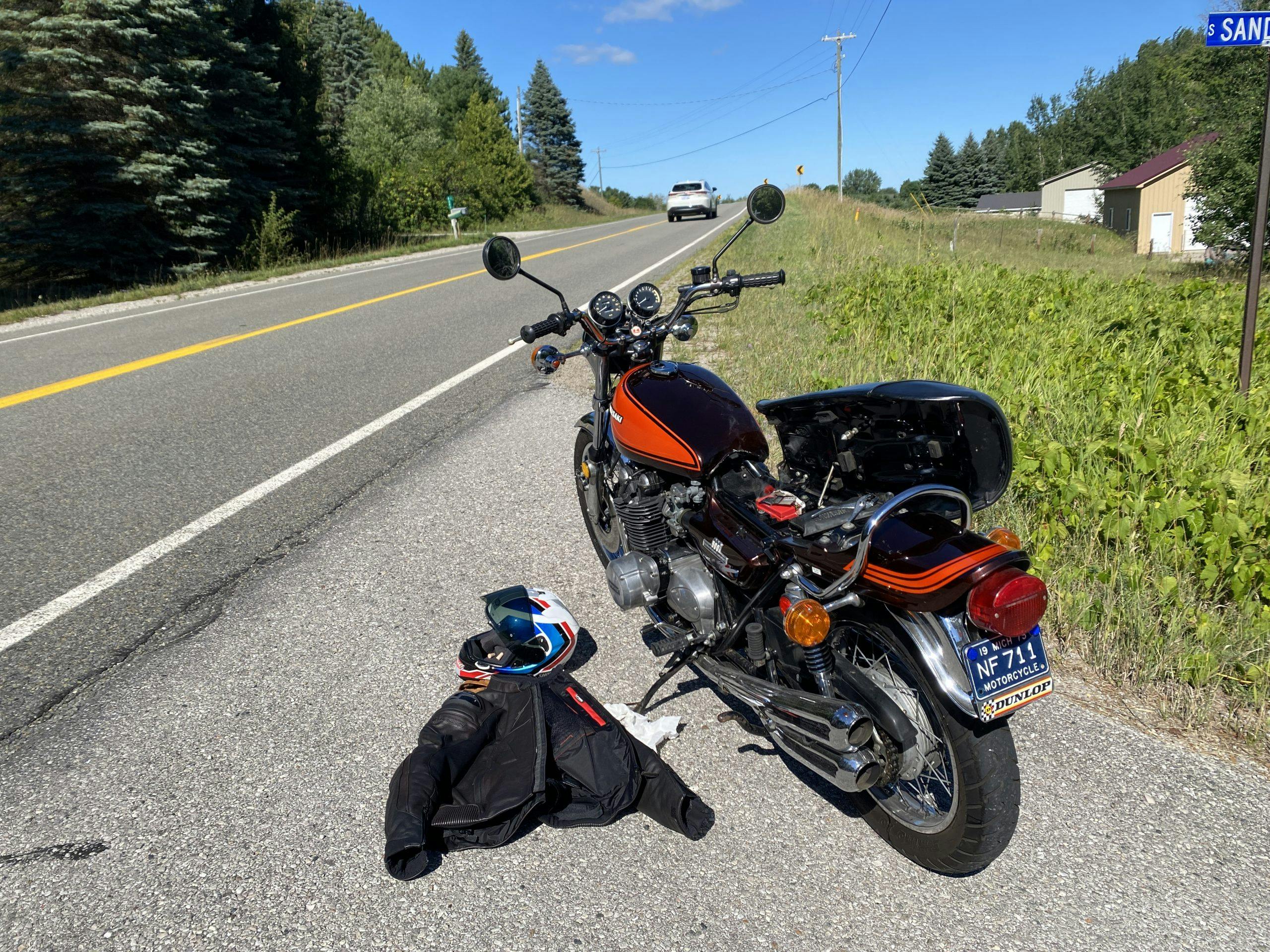
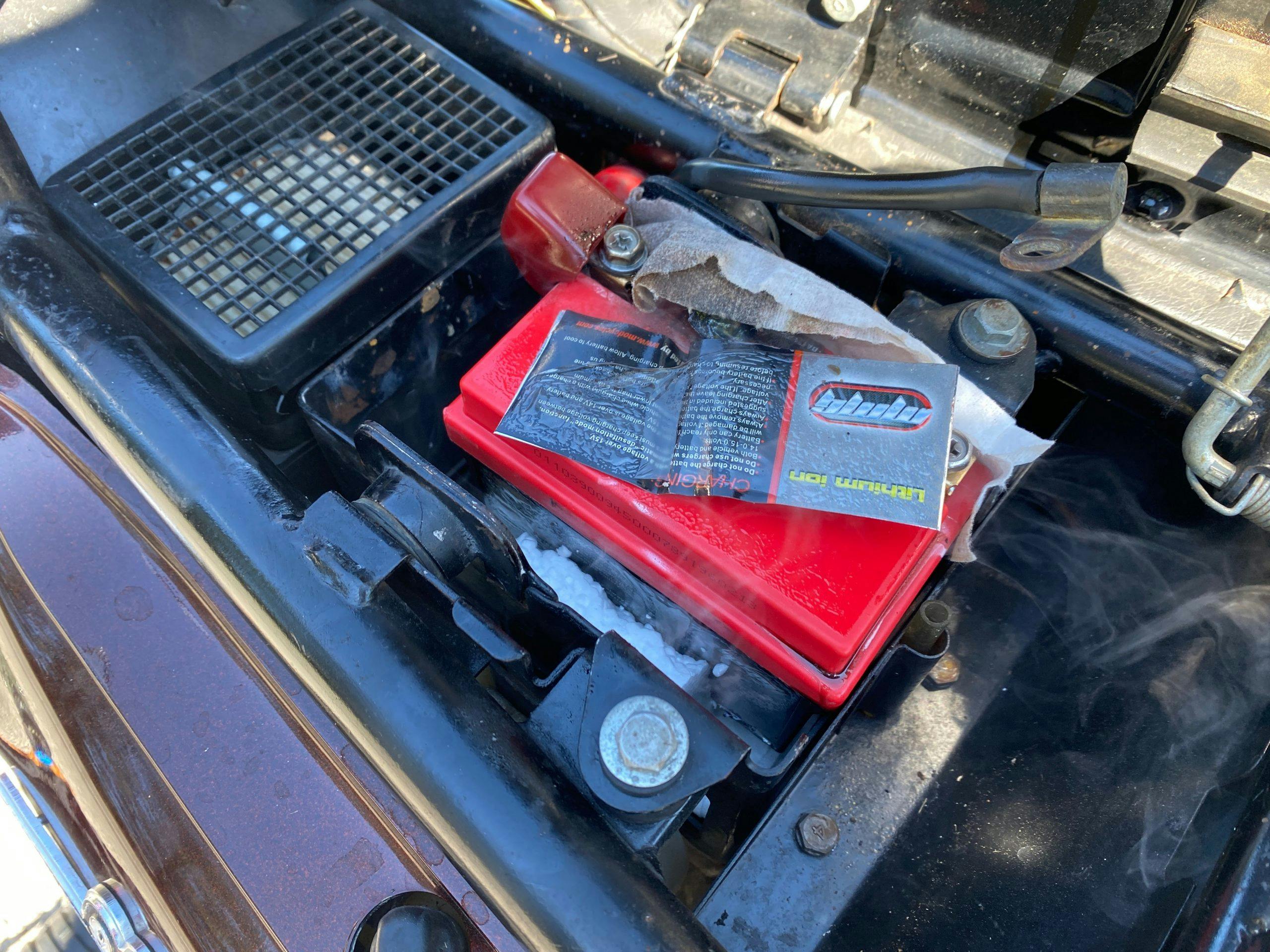


Kyle – ever read “Zen and the Art of Motorcycle Maintenance?
I have. It wasn’t a book for me.
Me either. But had to finish it so when the friend who loaned it to me asked what I thought of it. Gawd, I hate lying to a friend like that! 😋
But… but… SIX POUNDS!
Yeah – on a 500+ pound bike. Not really a big deal unless being pushed seriously on a track, which this bike probably will not be.
Kyle: You have clearly been scarred by this experience. Can you say PTSD? Best to have your friend ring me up when one of his classic bikes needs to be exercised.
It’s a dirty job, but someone’s gotta do it.
Regards,
An article on correct replacement voltage regulator/rectifiers for old bikes might be in order. I noticed some aftermarket companies provide that option for lithium battery applications in older bikes. As you know some of these 40-50 year old electronics get crispy and dry from age and heat cycling.
I’ve gotten 10-15 years out of my standard wet motorcycle batteries. I keep them on a float all winter, clean connections, check water levels and make sure they are securely fastened down to keep from bashing around. I would never use an “off” brand battery and in all my old iron and i will never use a LI battery. Saving wieght???? for what? The charging systems in most older bikes have a lot of leakage and do not control the voltage as well. You could replace the rectifier with a newer one that uses mosfets to clean it up. A well built lead acid battery will do just fine with proper Maintenance. My last pickup truck had the original battery in it (18 years). I did tell the new owner he may want to change it out as most people do not do battery maintenance. Glad you reacted quick and saved not only the bike but other important parts….ride on!
You are a braver man than me! I have always used OEM batteries in my Harleys and also keep a battery tender attached when the bike is not ridden over a week or so. But I always replace them about year 8. I’m just afraid of being stranded 100 miles from home at some inopportune time.
I’m too cheap for Li-Ion batteries. But my CB750 has a kickstarter (as does that Z1) so I swap out the heavy 14 amp hour battery for a tiny 4 amp hour version meant for a 50cc scooter. Most of these early bikes had adjustable, mechanical regulators, which will overcharge if maladjusted. Typically you can wire in a generic modern solid state regulator by just changing around a few wires.
But if you were able to ride the Z1 with no battery, that would suggest it has a permanent magnet charging system and not a typical alternator. Learn something new every day.
I had a ’74 Z-1 that I bought new. Sorely missed. Now too beat up for another.
Nice article with valuable information. Thanks!
Though I think Pirsig is a strange dude, I did think Zen and … contained some gems!
The motorcycle maintenance parts were fine and the ride was through parts of the country that I have ridden and know fairly well. I could see lots of it flash past in my mind’s eye while reading. It was the “Zen” parts that were obviously a little too deep for me. I’m just a plain ol’ country boy from Idaho, and not a follower of the musings of the ancient Greeks, Buddhists, or heavy-hitter philosophers in general. Guess Phaedrus and me were not in sync!
I’m not a fan of Lithium Ion batteries for that reason and others, including cost. I’d be far more inclined to use a high quality AGM battery. .
Its pretty evident that LIon batteries shouldn’t be in old tech that can’t regulate the charge well nor sense batt temps. Your friend would be wise to reconsider the choice. You are lucky as once they start burning can be hard to extinguish.
The photos make me very nostalgic as my Z1 was the exact same bike and I also rode the 750 and 500 triples before the Z1 came out then owned three different ones over time including the crazy turbo one. Fearlessly racing about on those machines was an experience I miraculously survived with only a few tank slappers and one off road excursion. Today I ride much differently.
Always enjoy your articles, keep on writing.
I bought a new 1973 Z1 (with the black engine) when I got back from Nam. I have never seen or owned a more capable bike. I put a lot of miles on it and maintained it weekly. My ex asked me if I loved the bike more than her and I screwed up and answered her…. now you know why there is a mention of ex!
Somebody is going to get killed by these Lithium batteries, oh yeah, they already have. Progress? What is the matter with good old batteries we had? Progress? hmm, makes you wonder.
Glad everything worked out with no parts (bike or people) being extra crispy.
I’ve had bad luck with Li ion batteries, not lasting & went back to lead acid in my Indians. I use the Honda B-38 6A & drop into a Chris Daniel’s box, works well & no one Knows.
I owned a 75 Z1 from new and experienced the voltage regulator failure! Original Yuasa battery boiled out the electrolite and stunk like rotten eggs! Thankfully, I refilled it from a water from a nearby brook using the sidecover as a scoop! Got home ok, replaced the regulator and back to normal. Prior to this incident, I had wondered why my headlight was so bright at RPM? Yep! Good less on lithium batteries!